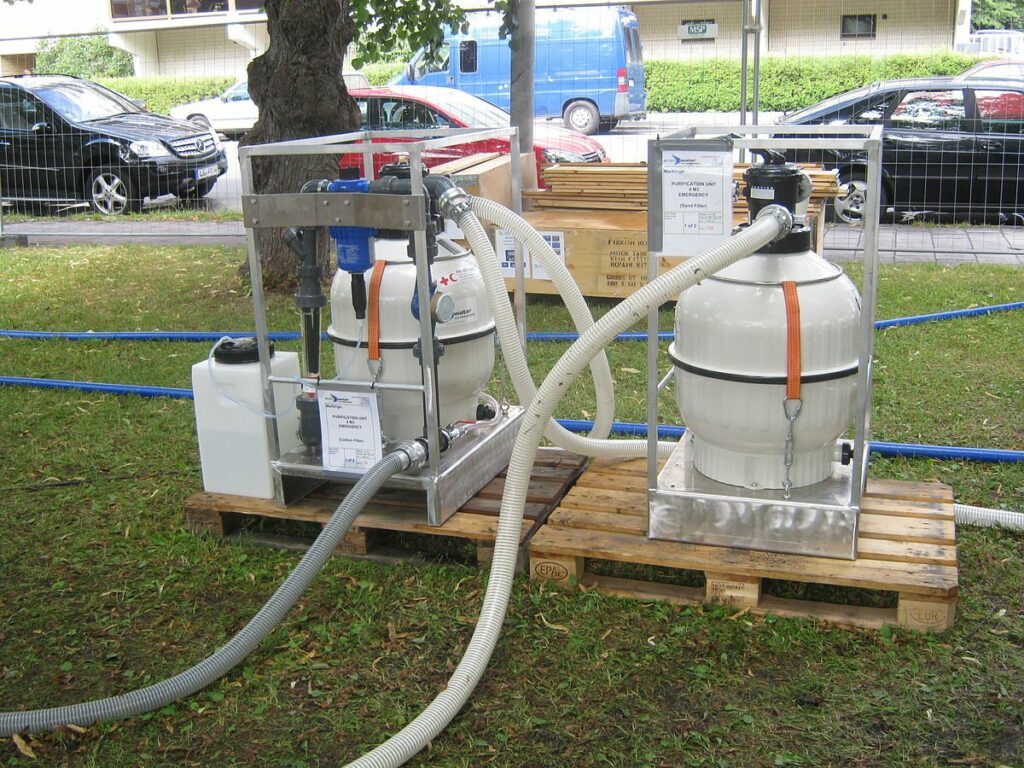One way to address water quality issues is through the use of a point-of-use purification system. These decentralized systems are installed directly or near the faucets and taps where the water is consumed.
Point-of-use purification offers a solution when centralized water treatment is ineffective or impractical, or where additional purification is required. Here’s how you can use a point-of-use water purification system to address water quality issues:
Choose Your Purification System
Water purification involves two main approaches: filtration and disinfection. Filtration employs physical filters to trap the impurities as water passes through them while disinfection targets the pathogens in the water. Some filtration systems have advanced filters capable of removing bacteria and other pathogens.
Disinfection systems only target the germs, so you need another solution to filter out sediments and heavy metals. The better approach is to install a filtration system and use disinfecting and neutralizing systems to complement it.
Filtering Out Impurities
Installing a point-of-use water purification system helps to filter impurities that have seeped into storage tanks, supply pipes, and faucets.
The types of impurities removed depend on the filters used. Activated carbon filters remove sediments, chlorine, and organic contaminants. Some patented advanced resin carbon block filters remove THMs, pesticides, PFAS, herbicides, chloroform, mercury, cadmium, lead, arsenic, glyphosate, and VOCs.
Reverse osmosis filters and ceramic filters also block various impurities, including sediments and bacteria. Water filtration systems often use multiple layers of micro-filters and absorbent compounds to remove different impurities.
Some filters feature micro-glass fibers, cellulose, and nano-alumina fibers thermally bonded to create a dense filtration canvas. These filtration systems help to remove contaminants and bacteria like E. Coli from drinking and cooking water.
Neutralizing Water Pathogens
Filters help to remove various impurities and sediments from your water depending on the micron size they can block. Many filters only remove a few germs, bacteria, and viruses because these pathogens are smaller than the filter’s micron size.
Disinfection systems offer a solution for removing more germs and pathogens from your water. Conventional point-of-use water disinfection systems include ultraviolet purifiers, chlorination tablets, and water distillers.
UV purifiers utilize ultraviolet light to neutralize viruses, bacteria, and germs. While these systems provide autonomous disinfection, they don’t always kill all pathogens. Chlorination tablets introduce chlorine to remove germs during emergencies.
Since the goal of filtration is to remove impurities like chlorine, this option requires additional purification processes. Water distillers boil water and collect the steam, leaving the unwanted sediments and impurities behind. One caveat about this option is the extra energy required to boil water.
Address All Points of Use
When addressing water quality issues in your home, determine which faucets you want to have a purification system. Apart from distribution to your outdoor garden, every faucet inside the house needs a purifier.
Whole house water purification systems offer multi-stage filtration and disinfection that produce clean, clear, fresh water. You can use them to reduce exposure to impurities and pathogens that cause infections, skin issues, and other health conditions.
Kitchen water filtration systems remove pathogens, heavy metals, odor, and bad taste from your drinking and cooking water. Bathroom showerhead and faucet filters also help to improve the quality of your bathwater. Some systems employ magnetic field technology to reverse hard water conditions without using salt or electricity.
The benefits of such purifiers include softer skin and hair and reduced spotting and scaling on pipes. Whole house systems also reduce buildup on your pipes and appliances. Below are more ways to address all points of use:
Install well water purifiers to remove iron, manganese, radium, arsenic, heavy metals and bad smell from hydrogen sulfide
Use water conditioners to address hardness, silica, phosphates, sulfates, and old scale without removing calcium and magnesium
Combine faucet-mounted filters with under-the-sink systems, countertop systems, and tabletop pitchers
Get Your Water Purification System Today
Purifying your water helps to prevent infections and health conditions caused by water-borne pathogens and contaminants. Water purification also protects your faucets, pipes, and appliances from buildup, spotting, and scales, which prevents premature breakdowns. Get your water purification system today to improve the quality of water coming out of your faucets.


